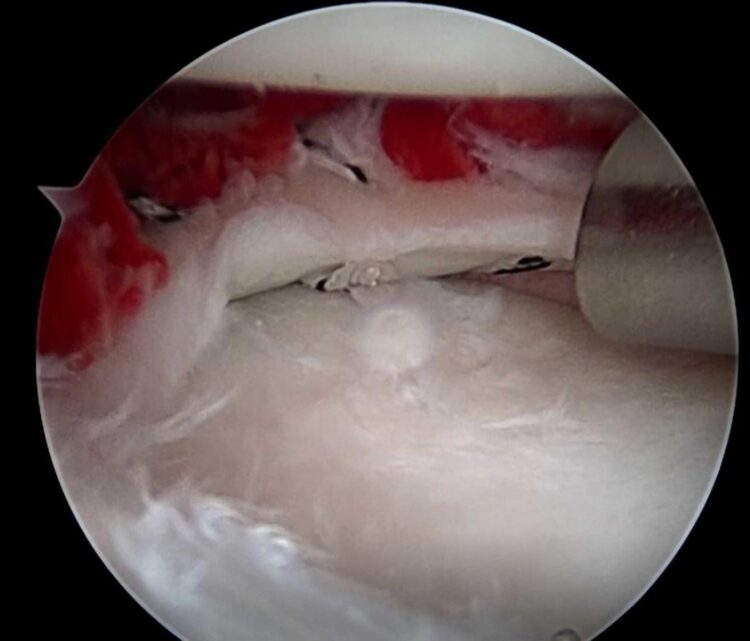Osaka City University shows that bone marrow-derived fibrin clots contain more growth factors than peripheral blood and better fit for meniscal repair surgery

Credit: H. Nakamura & Y. Hashimoto, Orthopedics, Osaka City University
While this isn’t the fountain of youth, scientists may have improved healing in our joints – even in areas that become weaker as we grow older. The meniscus is a durable, yet flexible tissue found in joints like our wrist and knees that helps them absorb shock during movement. Occasionally tears can occur in the meniscus due an awkward movement or structural weakness from old age. When we are young, there is plenty of blood flowing to this area allowing for quick healing, but as we get older, the meniscus receives less and less blood – with the inner most area becoming avascular. Tears in this area do not heal normally, often requiring surgery. Surgeons can draw fibrin, a protein involved in blood clotting, from peripheral blood (PB) or bone marrow aspirate (BMA), and implant a fibrin blood clot into the injured area to help with healing. However, little was known about the differential effectiveness of fibrin from the PB and BMA areas.
Scientists from the Graduate School of Medicine, Osaka City University, have evaluated the clinical results of a meniscal repair using BMA-derived fibrin clots and found that rates of clinical and anatomic failure, and re-tear were 10%, 6.7%, and 3.3% respectively – well below their PB counterpart. The results were published in Arthroscopy: The Journal of Arthroscopic & Related Surgery.
“There are various methods of meniscal repair that try to prevent re-tear” states Lecturer Yusuke Hashimoto, “but the re-tear rate still exceeds 20%”. To see if BMA can bring this number down, the research team had to first understand the levels of growth factors involved in tissue repair found in BMA and then see the effects BMA-derived fibrin clots had when sutured into tissue during meniscal surgery.
Collecting bone marrow fluid and peripheral blood from 5 patients undergoing meniscal surgery, the team prepared fibrin clots for cytokine measurement. “Cytokine are proteins that stimulate the reparative process” states Professor Hiroaki Nakamura, “and through them we are able to gauge the levels of growth factors like bFGF, TGFβ, and SDF-1.” Cell count evaluations found that BMA was more abundant in these growth factors than PB.
Next, as a 2-year follow-up post-surgery, they examined pre- and post-operative clinical results and the healing rate of meniscus in 30 cases of meniscal surgery that was combined with a BMA fibrin clot. MRI results showed significant improvements in the condition of the meniscus compared to the preoperative results and x-ray evaluation showed no significant progression of knee deformity.
“PB clots have been widely reported as a material to enhance meniscal healing”, states Hashimoto. However, with a reported 20% of meniscal repairs having reoperation at long-term follow up, “our method of introducing BMA-derived fibrin clots into the injured area may become a treatment for meniscus injuries that until now have not been curable.”
###
We are Osaka City University – the oldest research university in Osaka. With 9 undergraduate faculties and 11 graduate schools all dedicated to making urban life better, energy cleaner, and people healthier and happier, we have won numerous awards and have produced 2 Nobel laureates. For more information, please visit our website at https:/
Media Contact
Global Exchange Office
[email protected]
Related Journal Article
http://dx.





